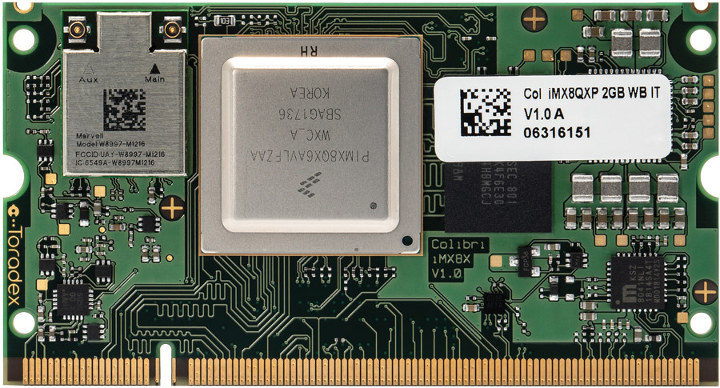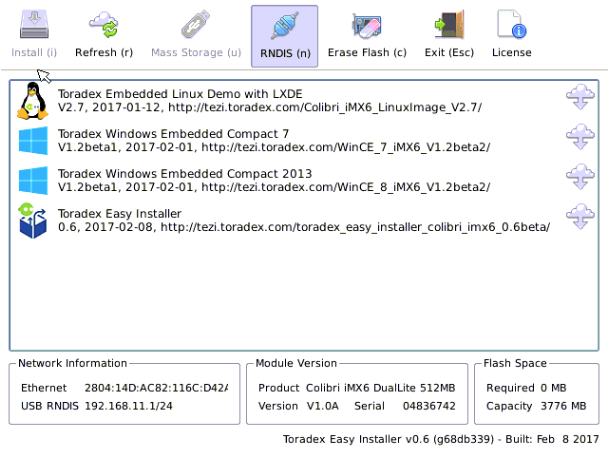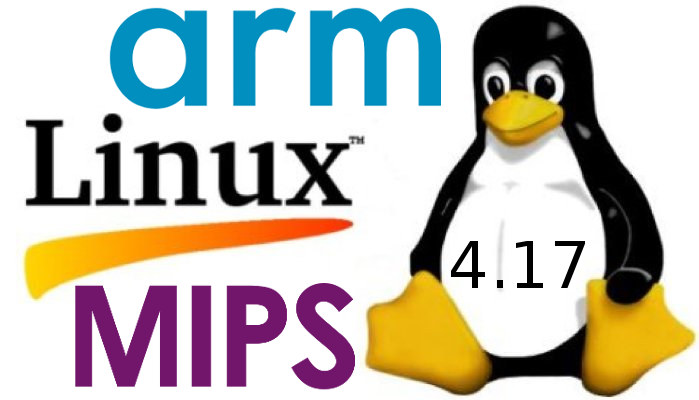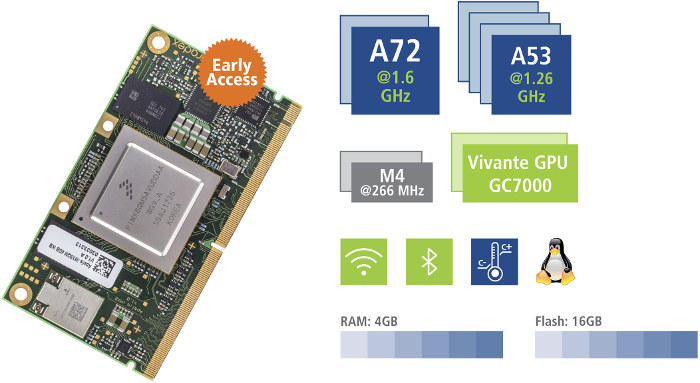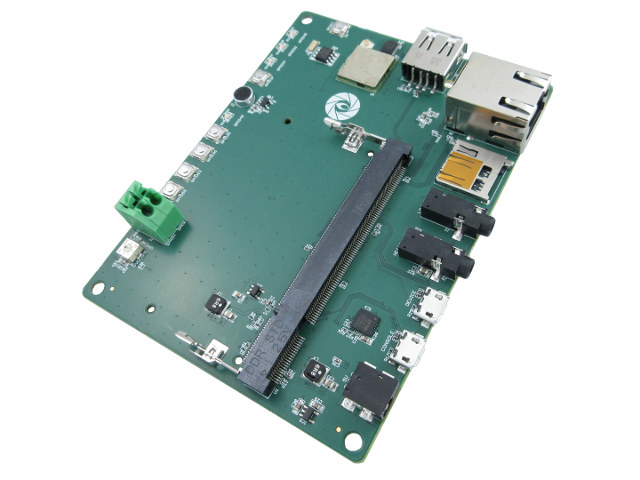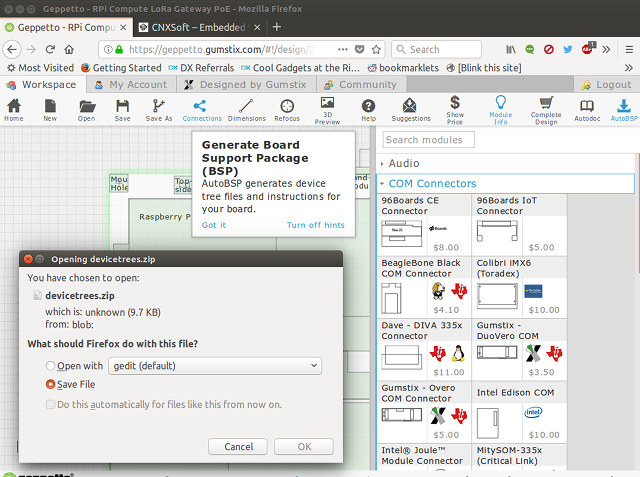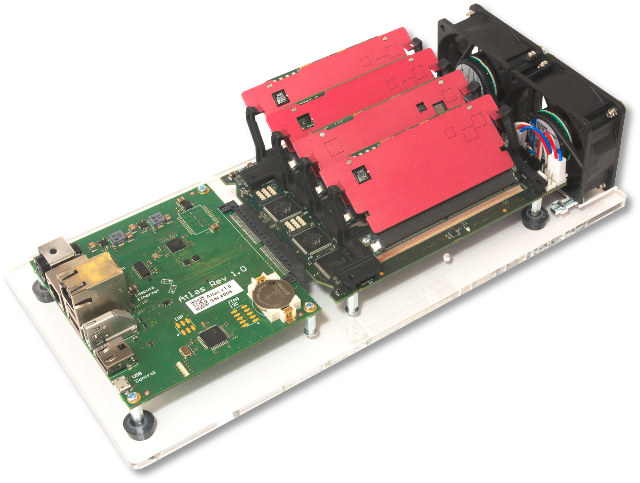Designed for infotainment and dashboard in automotive applications, industrial control, robotics, healthcare, mobile payments, handheld devices, and more, NXP i.MX 8X Arm Cortex-A35 processor was first spotted in 2016, before being formally announced in March 2017. But it took quite longer to see actual products launched, and several vendors announced i.MX 8X modules in the last week while NXP also released documentation. One of them is Toradex with their Colibri iMX8X system-on-module with up to 2GB LPDDR4 memory, 8GB flash, a built-in 802.11ac 2×2 MIMO WiFi + Bluetooth 5 module, dual channel LVDS, MIPI DSI display interface, a quad-lane MIPI CSI-2 camera interface, etc… Toradex Colibri iMX8X specifications: SoC (one of the following options) NXP i.MX 8QuadXPlus quad core Cortex-A35 processor @ up to 1.2GHz, Arm Cortex-M4 MCU @ up to 266MHz, HiFi4 DSP, Vivante GC7000Lite performance optimized GPU, 4K video support NXP i.MX 8DualXPlus dual core Cortex-A35 processor @ […]
Visual Studio 2017 with an Embedded Linux Arm Device
This is a non-sponsored guest post written by Marc Goodner: Principal Program Manager, Microsoft, and Jeremias Cordoba: Innovation Engineer, Toradex. Today many embedded devices run some flavor of Linux as their primary operating system. This poses a challenge to developers who run Windows on their development machine. This article explains a new way to use the latest Visual Studio for C++ development on an embedded Arm Devices from a Windows Host PC using containers for the build environment. The device we are deploying to is from the Toradex Colibri Family of System on Modules using the NXP i.MX 6ULL SoC, which features an Arm Cortex A-7. As a demo project, we will connect a Bluetooth Sensor with the Toradex Colibri Module. Please note that Visual Studio support for this case is in an early state, you will see improvements from Microsoft and Toradex in the coming months. Prerequisites Colibri i.MX 6ULL […]
Linux 4.17 Release – Main Changes, Arm & MIPS Architectures
Linus Torvalds released Linux 4.17 last Sunday: So this last week was pretty calm, even if the pattern of most of the stuff coming in on a Friday made it feel less so as the weekend approached. And while I would have liked even less changes, I really didn’t get the feeling that another week would help the release in any way, so here we are, with 4.17 released. No, I didn’t call it 5.0, even though all the git object count numerology was in place for that. It will happen in the not _too_distant future, and I’m told all the release scripts on kernel.org are ready for it, but I didn’t feel there was any real reason for it. I suspect that around 4.20 – which is I run out of fingers and toes to keep track of minor releases, and thus start getting mightily confused – I’ll switch […]
Toradex Launches Apalis iMX8 Computer-on-Module based on NXP i.MX 8QuadMax SoC
Toradex Apalis iMX8 is another system-on-module powered by NXP i.MX 8QuadMax hexa core Arm Cortex A72 + 53 processor, which comes with 4GB LPDDR4 RAM, up to 16GB flash, and an on-board dual-band 802.11ac 2×2 MU-MIMO Wi-Fi and Bluetooth 5 ready module. The company has just opened early access for selected customers, so it has become possible to start developing products with the MXM3 computer-on-module. Apalix i.MX8 module specifications: SoC – NXP i.MX 8QuadMax hexa core processor with 2x Arm Cortex-A72 cores @ 1.6 GHz, 4x Arm Cortex-A53 cores @ 1.26 GHz, 2x Cortex-M4 real-time core @ 266 MHz, and dual Vivante GC7000XSVX GPU System Memory – 4GB LPDDR4 (64 Bit) Storage – Up to 16GB eMMC flash On-module Connectivity Gigabit Ethernet via Microchip KSZ9031 transceiver with low power features Dual-band 802.11ac 2×2 MU-MIMO Wi-Fi and Bluetooth 5 via Azurewave AW-CM276NF M.2 1216 LGA module Audio – NXP SGTL5000 low […]
Gumstix Chatterbox is a Customizable, AVS-Ready Development Platform based on Toradex Colibri i.MX7 SoM
There are several official Amazon Voice Service (AVS) development kits, and we’ve already covered a few of them with the likes of Allwinner 3-Mic Far Field AVS Development Kit or Intel Speech Enabling Developer Kit, but you can also design your own board conformant to Amazon’s Alexa Voice Service functional design guide. That’s exactly what Gumstix has done with Chatterbox carrier board for Toradex Colibri i.MX7 system-on-module powered by NXP i.MX7 Arm Cortex A7 processor. Designed in Geppeto, the board includes a 2.5-Watt speaker driver, an on-board microphone, and Line IN and headphone jacks, as well as WiFi, Bluetooth and Ethernet for connectivity. Gumstix Chatterbox specifications: Colibri iMX7 SO-DIMM socket Storage – microSD card slot Audio – On-board microphone; 2.5W speaker driver; Line-in & headphone jacks Connectivity – Gigabit Ethernet, 802.11 b/g/n WiFi & Bluetooth 4.1 LE (TI WiLink8 WL1831) with u.FL antenna connector USB – 1x micro USB […]
Gumstix AutoBSP Automatically Generates Device Tree Files for Hardware Designed with Geppetto
Gumstix launched Geppetto Design-To-Order (D2O) system back in 2013, and at the time you could design complete baseboard for their Overo CoMs right in your Chrome or Firefox web browser, and once complete, order the board from the website. The system is meant to save you time, and “design” here does not mean drawing schematics, and laying out PCBs, but instead selecting board size, and adding ports as needed. Since then, the company has added support for more modules, and you can now easily build you own baseboard for Raspberry Pi Compute Module, Technexion PICO-IMX6 module, Toradex Colibri SoM, 96Boards Mezzanine, and they even have Beaglebone Black and 96Board CE or IoT connectors, among others. Support for Qualcomm DragonBoard 410c, Atmel (Arduino) , and STMicro platforms is also being worked on. Their latest feature – AutoBSP – automatically generates device tree files for your custom boards, so you can simply […]
Getting Started with OpenCV for Tegra on NVIDIA Tegra K1, CPU vs GPU Computer Vision Comparison
This is a guest post by Leonardo Graboski Veiga, Field Application Engineer, Toradex Brasil Introduction Computer vision (CV) is everywhere – from cars to surveillance and production lines, the need for efficient, low power consumption yet powerful embedded systems is nowadays one of the bleeding edge scenarios of technology development. Since this is a very computationally intensive task, running computer vision algorithms in an embedded system CPU might not be enough for some applications. Developers and scientists have noticed that the use of dedicated hardware, such as co-processors and GPUs – the latter traditionally employed for graphics rendering – can greatly improve CV algorithms performance. In the embedded scenario, things usually are not as simple as they look. Embedded GPUs tend to be different from desktop GPUs, thus requiring many workarounds to get extra performance from them. A good example of a drawback from embedded GPUs is that they are […]
Christmann RECS|Box Atlas Quad Apalis Microserver Evaluation Kit Supports Four Toradex Apalis SoM
System-on-modules are normally used in low volume embedded systems, but they can also be used in microservers, for example to upgrade capacity as needed. Christmann informationstechnik + medien GmbH has developed a microserver evaluation kit taking up to 4 Toradex Apalis SoMs for example based on Nvidia Tegra K1 processor, and also offers full rack systems with up to 72 modules. Christmann RECS|Box Atlas Quad Apalis specifications: Modules – 4x Slots for Apalis SoM Connectivity – 1 GBit/s Compute Ethernet, 1 GBit/s Management Ethernet Video Output – 1x HDMI USB – 3x USB host ports, 1x micro USB port Misc – 5 Status LEDs for USB, communication, and serial console, 4x fan connectors, KWM switch, 5x temperature sensors, 6x current sensors, 1x voltage monitor, fan speed monitoring Power Supply – 12V via a 4-pin jack Dimensions – 300 x 145 x 68 mm The evaluation kit includes an Atlas board […]


